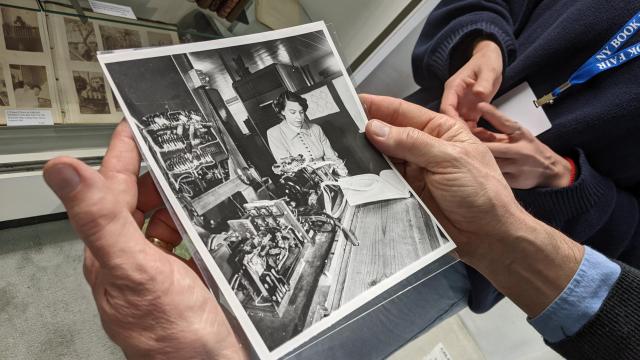The essence of the very concept of “artificial intelligence” is inherently cold. Cool metal encasing a mess of silicon and wires buzzing with processed data. No, the computer cannot “feel” or even “think,” but that sense of emotional scarcity often gets attributed to the scientists and researchers who helped create what we know as AI. Knowing that, what emotional substance can you truly glean from the old typewritten extrapolations of an early computer scientist?
Enough — enough is the answer. The starched writing of a 1960s academic is burned with with few hints of excitement like the scattered ash of a cigarette left on a white page, but they are there, hidden in the technical jargon of faded research papers and technical documents. In a letter from pioneering philosopher David Lewis to a friend in 1964, he touched on the metaphysical nature of intelligence. He claimed that human intelligence is an “illusion,” that we’re barely more than computers with large storage capacity. He rejects an existential identity of the human consciousness. To recreate a real human brain, you would need to recreate all its firing neurons, a difficult task since back then scientists understood even less about the brain than they do now.
“If a machine won the Turing game — behaved intelligently — with the wrong internal mechanism, it wouldn’t be intelligent,” Lewis wrote. “You say, what if humans have the same sort of internal mechanism? We don’t know well what kind they have.”
At the annual New York International Antiquarian Book Fair, a gathering of antique and rare booksellers from around the world, one small booth by the UK-based Christian White Rare Books contained a single shelf of old, yellowing documents, photos, and other paraphernalia relating to the early days and research into artificial intelligence. Owner Christian White and his daughter Poppy offered Gizmodo an exclusive glimpse into the old, fading text that offered a rare and intensive look at that early AI history.
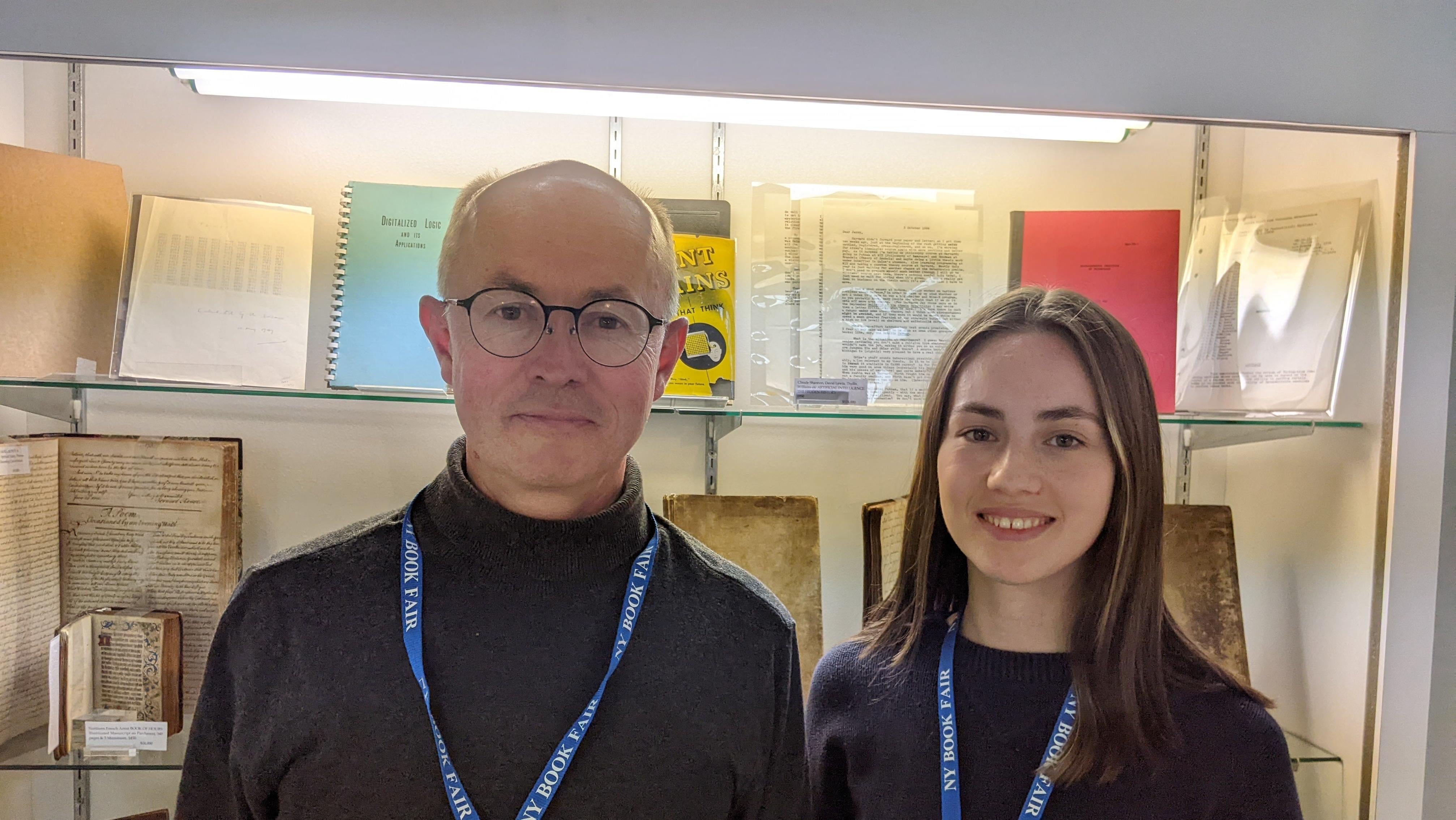
Though the Turing test is now considered antiquated, these papers, letters, and documents were penned during exciting days, the “anything is possible” post-war fervor that bled from the research papers into the collective consciousness through the burgeoning “golden age” Science Fiction scene. So much of the collection is, White admitted, “quite boring” to look at, at least on its face. There’s technical memorandums, conference flyers. To White, with all his very British mix of whimsy and deference, this was the stuff that was “going to change the world, but it’s not always done in a beautiful, fantastic format.”
Most of the papers relate to the late 1940s, ‘50s and ‘60s, the post-WWII age where the legacy of Alan Turing and his contemporaries created a boom time for advancing the idea of an artificial cognition. Computers, these “thinking machines,” didn’t actually perform any real thought. Our modern understanding of generative AI still doesn’t actually “think.” But beyond vague notions of an “artificial general intelligence,” this early research shows that the ideas of Deep Learning, as we know it now, were already being theorised before the technology was there to see it through. The concept of “neural networks” that powers today’s AI chatbots, as well as probabilistic computing and machine’s passing as a human — all that was being considered long before companies like OpenAI came onto the scene.
“From the very beginning, computers are being thought about not just as mathematical, but as a kind of thinking,” White said. “This idea of artificial intelligence was there from the outset.”
While there is plenty of AI experiments coming from laypeople in an open source network, today’s major AI developments are stemming from for-profit companies who have shunted their entire businesses toward deploying generative AI en masse. Compared to now, these papers were from a time of scientists doing research for research’s sake, and not just in the halls of academia. Places like Bell Telephone Laboratories, the once-famed site of Nobel Prize-winning research into lasers and transistors, was also a home for early work in AI. One of White’s collections included a probabilistic work study looking at how well Turing-type computing machines were with a “random element.” Another old brochure from ACF Industries shared multiple papers discussing, in part, techniques for weighing information for intelligence analysis.
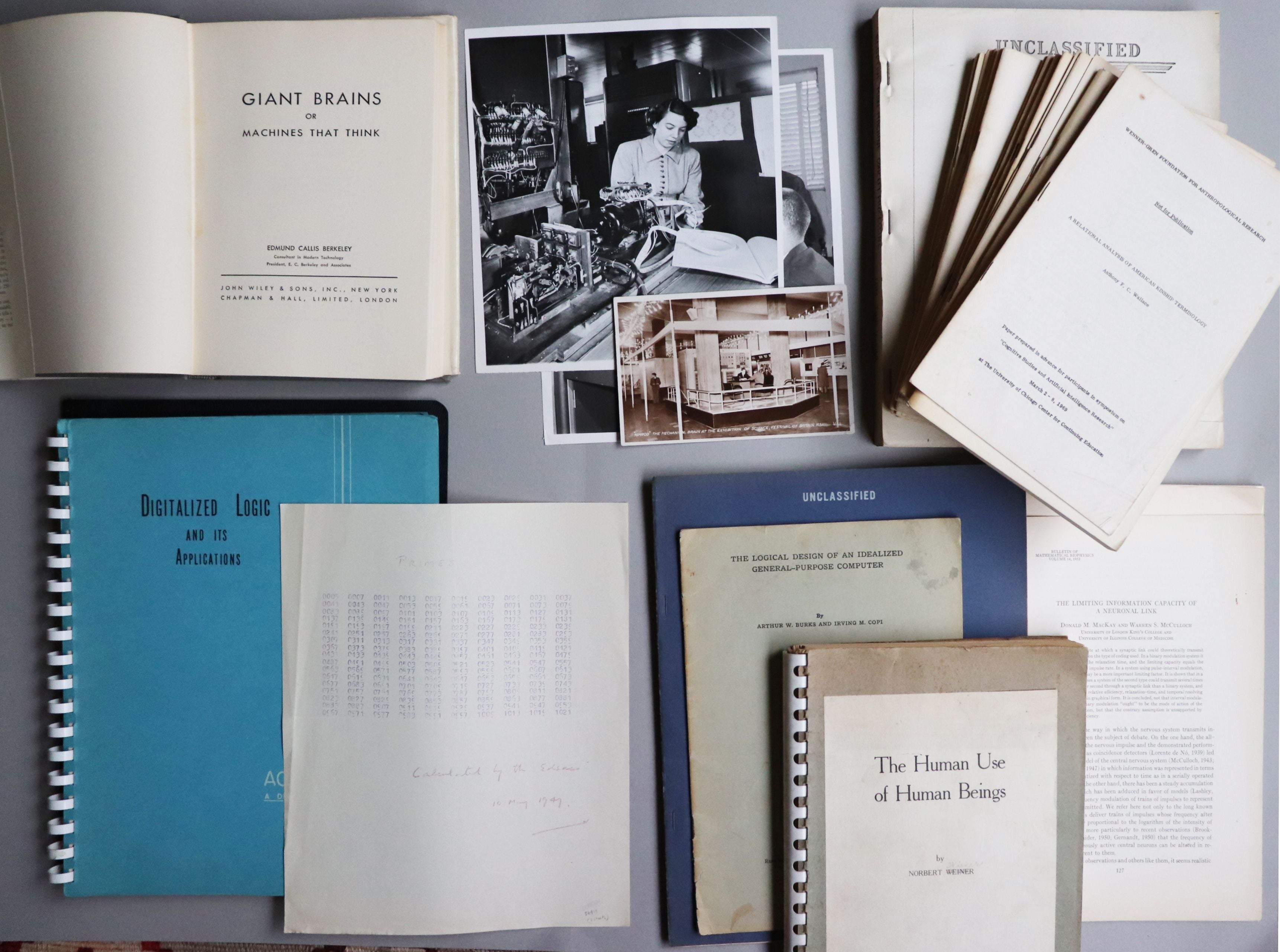
The average ChatGPT-user probably hasn’t heard any of the names on these documents, though women are often left out of the conversation on early AI research, despite how critical they were. One of those ACF papers was co-authored by Joyce Friedman, a professor and computer scientist working on the cutting edge of machine intelligence in the 1950s and 60s. Another photo in the collection features pioneer computer scientist Jean Hall feeding perforated paper through a computing machine at Argonne National Laboratory.
The documents also showcase the concerns these early researchers had about the computers they were building, before they even had the technical ability to build these machines. They were aware of the risks of what would happen when people couldn’t tell the difference between content generated by a human or by AI.
“Just by the idea of making a computer simulate a human is quite terrifying,” said Poppy. The younger White is starting her master’s degree in reproductive health at the University of Edinburgh. “I think these people, they were just thinking of something so new and different, it probably seemed kind of surreal.”
Flip through the following slides to get a better look at the ways scientists progressed toward AI, and how they conceptualized recreating the human brain with computers.
Jean Hall at Argonne National Laboratory, 1953
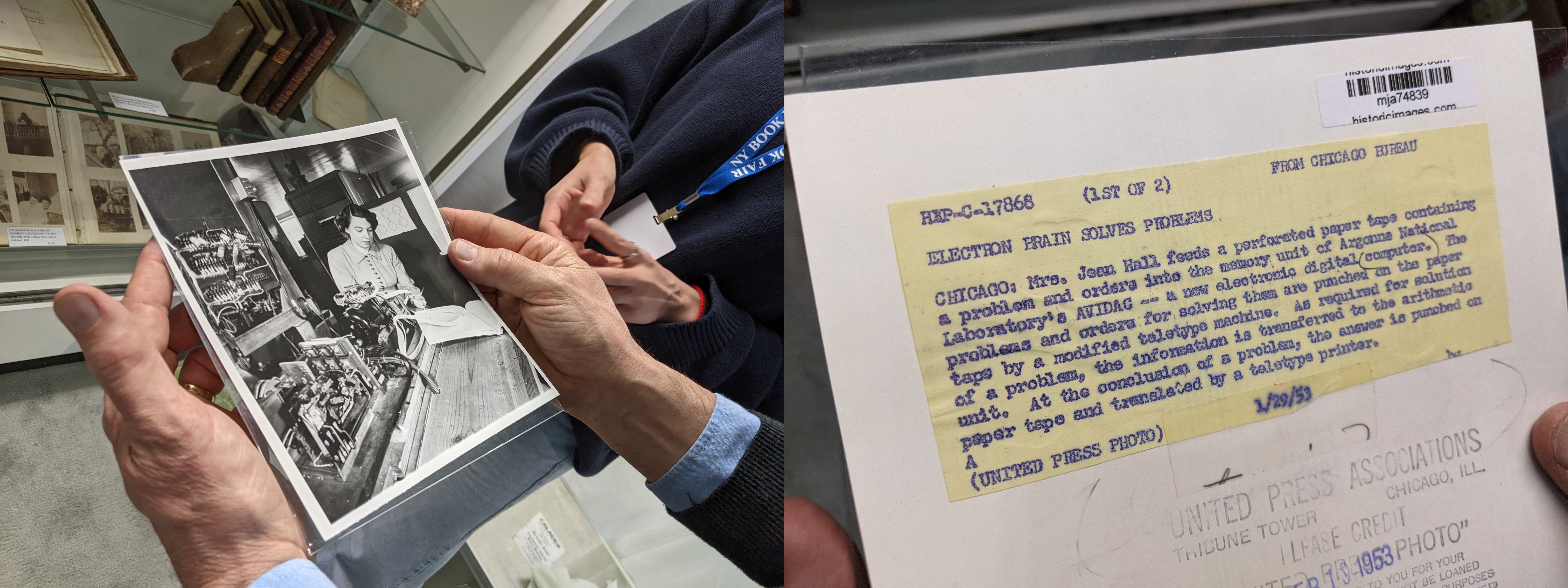
Jean Hall was an early computer scientist and pioneer in the field. This image shows her at Argonne National Laboratory feeding orders into the lab’s digital computer AVIDAC.
Letter from David Lewis on machine intelligence, 1964
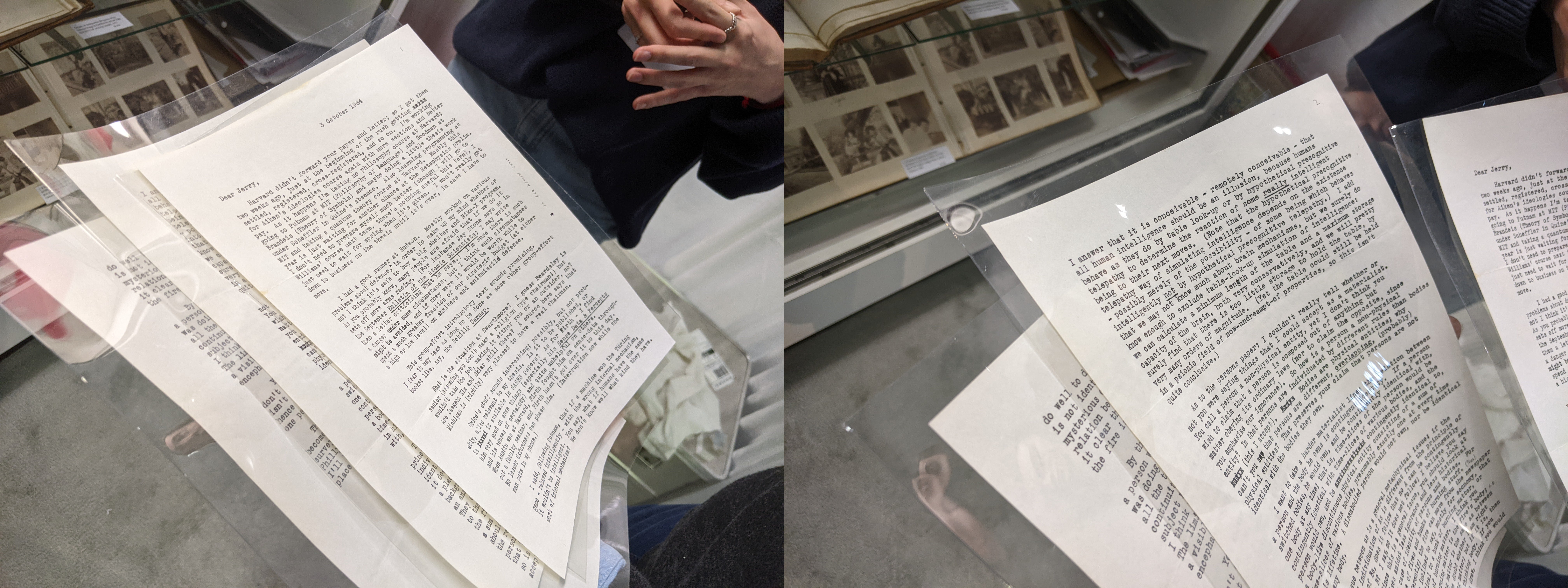
Philosopher David Lewis discussing his thoughts and worries about intelligence regarding computers.
Poppy White:
“He’s looking at the theory of the mind and how do we approach a computer that has a mind that has a brain that kind of is starting to behave with intelligence, trying to simulate or represent the human brain or our mental processes.”
Giant Brains by Edmund Berkley, 1949

A book by early computer scientist Edmund Berkeley that, while very technical in its descriptions, still popularised the idea of early computers being capable of having cognitive abilities.
Christian White:
“This was obviously intended, at that point, for a kind of popular audience. This is for you and me, not for the specialists in the field. It would be tough going, I suspect, if you didn’t have a kind of maths degree. But nonetheless, it’s a commercial publisher producing it and intending it for a wider audience than just the kind of specialists who are going to a conference who are going to read a scientific paper.”
Memorandum on Probabilistic Machines, 1954

This paper describes “Turing-type computing machines” and how their operation could depend on the output of a “random device.”
Christian White:
“Because of the grammatical structure of language, there are only so many possibilities that language can go off with. And therefore, if you’re able to process that, you can make predictions about what language will do using theories of probability. You then get the comprehensibility of language, and — ultimately — you’re on the path natural language producing AI.”
Research on so-called “Biological Computers,” 1957

Warren McCulloch did pioneering research into neural structures and function in the context of creating “biological computers,” AKA a computational structure that mimics the processes of the human brain.
Poppy White:
“And so then much later, McCulloch, and [computational neuroscientist Walter] Pitts doing a lot of research and looking at the theory of neurology, and what they find is that the human brain’s processes of thought can actually be represented using this binary analysis. You have a very complex computer that can represent the human brain, and so that basically is kind of artificial intelligence.”
ACF Electronics on Logic Machines, 1955

This booklet is a technical paper provided to the Air Force Cambridge Research Centre. A lot of early work on AI, going all the way into the 1980s and beyond, was propped up by the U.S. armed forces and the industries surrounding it.
Poppy White:
“The ACF electronics collection is basically part of this research project into the logic machine. This first machine was theorised to have properties that would allow it to answer general problems. It’s one of the first times that had ever been considered. When computers were just solving numerical problems. This was theorizing all of these different things. I think a lot of that was because it’s an industrial company, so it was thinking a lot in terms of industry and computer’s role within that.”
Multiple papers involving research on “logic machines”
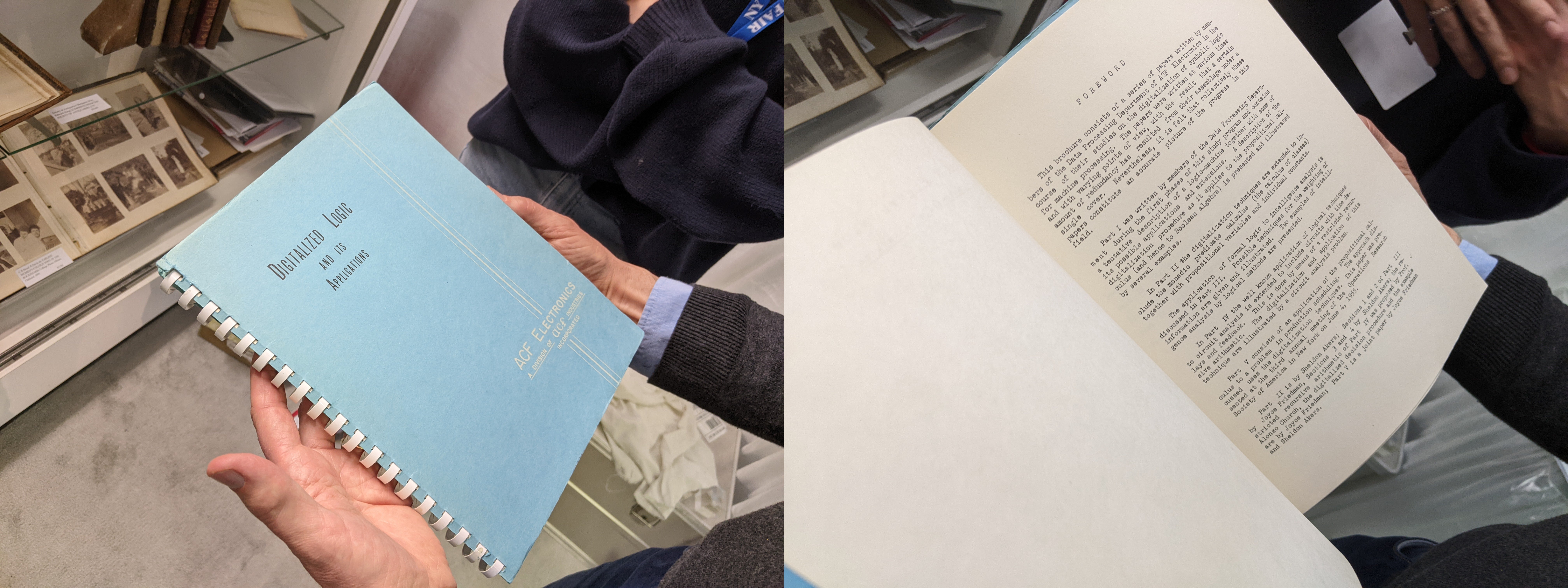
A brochure containing multiple research papers by scientists working at the data processing department at ACF Electronics. The brochure was meant to display “an accurate picture of the progress in this field.”
Poppy White:
“It was a project that took place at ACF electronics led by Alonzo Church, this a professor, lecturer, and researcher who headed this research project into the theory of logic machine. This kind of moved away from computing that happened in the past. Basically, mathematical computing focused on purely numerical problems being solved. And this was kind of pioneering a sense that it was the first time that we expect anyone who thought about computer being able to kind of solve problems and general problems and human problems. And what’s also really interesting is that you’ve got numerous women taking part in that research, which is really important, because this is the early 1900s. And so there’s Joyce Friedman has items of theirs that they’ve co-authored or authored which is part of this research.
Two more papers by Warren McCulloch
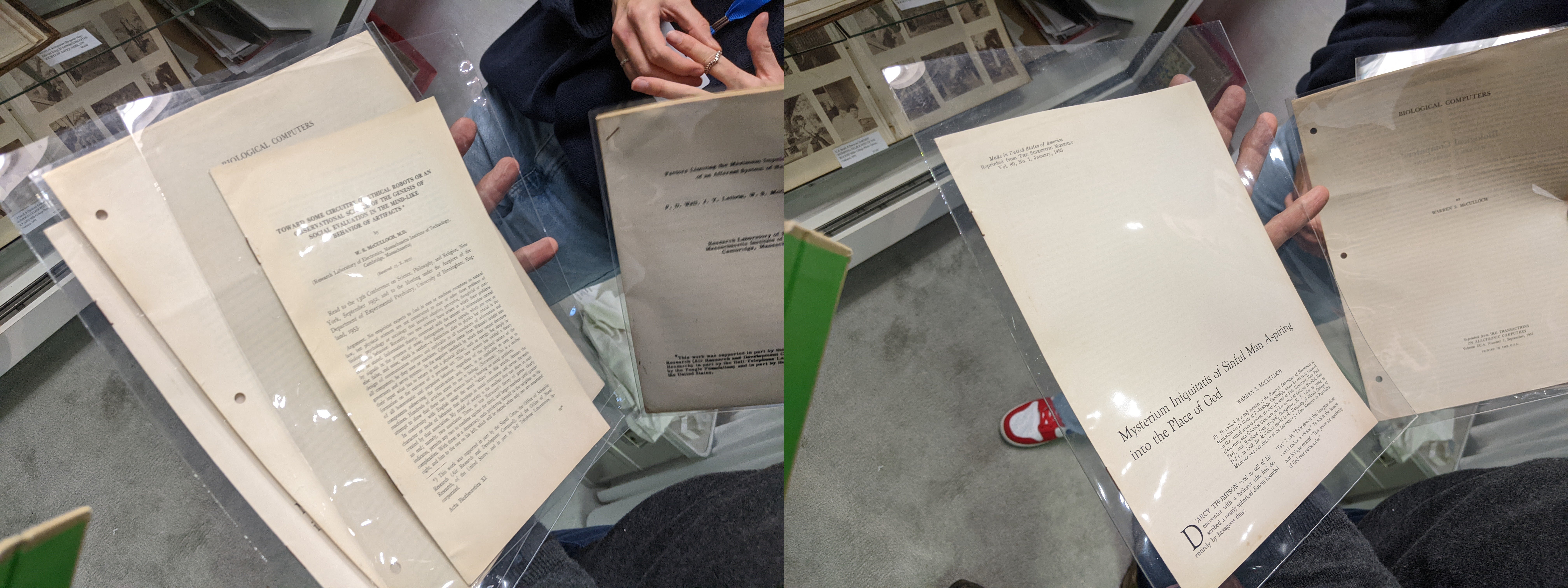
As a neurophysiologist and cybernetician, Warren McCulloch introduced many new ideas into the popular lexicon and furthered the realm of cybernetics. But among that, he also brought up several ethical questions about the role of machines in human society. The paper on the left touches on “the mind-like behaviour” of robots, while the one on the right, in no small amount of flowery language, touches on themes of the unknown aspects of the human brain and people governing their own bodies with cybernetics.
Christian White:
“It’s that same dilemma, which again, these brilliant people doing this work so long ago, before the technical possibilities of realising it were present. They were nonetheless aware of as a risk of what happens when you can’t tell the difference between people and computers? And again, we’re in the mid 1950s. Computing power is so limited at this time. But nonetheless, the theory of all of this is already being worked through. And McCulloch is absolutely central to that at MIT.”
